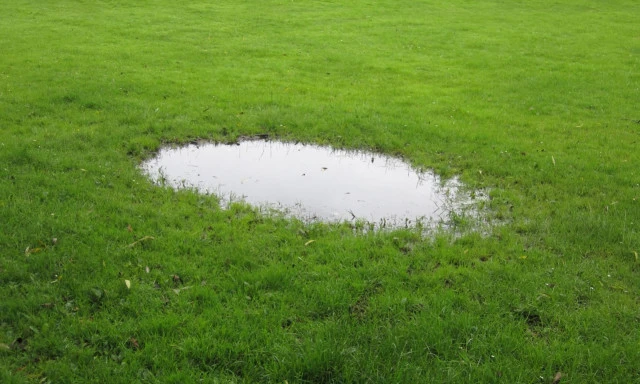Lawns in Autumn
Early autumn is the very best time to get your lawn healthy, weed-free, thickened and looking great in preparation for winter. Don’t wait for spring next year as so many do. Although spring is also a good time to sow lawn seed and control weeds, if you do it now you will be able to enjoy your lawn come spring, rather than have to work on it.
De-Thatch
Excessive Thatch - Thatch is the dense spongy layer at the base of your lawn made up of tightly interwoven or compacted stems, leaves and roots. Lawns with high levels of thatch (2 cm or more) can create an environment in which disease and insect pests thrive. Poor drainage compacted soil and unfavourable pH can contribute to high levels of thatch.
- Apply LawnPro D-Thatch or LawnPro Turfclean & Green Rapid+ to the affected areas of lawn. This naturally encourages the breakdown of excessive thatch by beneficial soil organisms and restores the balance of breakdown to build-up.
- Alternatively manually remove the excessive thatch by raking out the dead material with a grass rake, de-thatcher rake or mechanical scarifier.
- Then apply LawnPro Lawn Thickener to promote strong grass growth and to fill in areas where grass has been stunted.
See the article To Mulch or Not To Mulch for more advice on keeping a good level of thatch in your lawn.
Sweep Up Autumn Leaves
Sweep up leaves or blow them off your lawn; don’t allow autumn leaves to build upon the lawn in autumn and winter as these will weaken the grass underneath and harbour pests and disease. See the 'Rake Up Those Leaves' article for more.
Aerate
Aerate (spike) your lawn to improve oxygen movement to the grass roots and improve drainage so that the lawn soil is not waterlogged through the winter period. Push a garden fork 10-15 cm into the lawn and gently pull back on the fork to open up the soil structure. Do this over the whole lawn or particularly compacted areas. This also encourages earthworms whose activity in the soil is beneficial because they redistribute nutrients and naturally aerate the soil.
Clear Weeds
Lawn herbicides such as LawnPro All-in-1, LawnPro Turfclean and LawnPro Prickle and Hydrocotyle are most effective when weeds are growing actively in autumn (and spring). Many weeds will continue to grow through the winter months so dealing with them in autumn will mean many fewer to deal with in spring.
Trim Back Shading Trees and Shrubs
Your lawn needs light. Particularly in the months with shorter days, your lawn grass needs light to remain healthy. So trim back any trees or shrubs that have grown over your lawn or shade your lawn for much of the day.
Fertilise and Sweeten Your Lawn
Give your lawn the nutrients it needs for the autumn growth and to survive the winter to come. LawnPro All-in-1 provides both weed control and nutrients.
Thicken Up and Fix Patches
Early autumn is the most effective time to thicken your lawn up by over-sowing with LawnPro Lawn Thickener and to fix bare patches with LawnPro Lawn Thickener or LawnPro Smart Seed. A thick lush lawn provides a good insulating layer which helps protect grass roots from frosts.
Mowing
In later autumn raise your mower height a notch or two and keep your lawn a little longer through the cool months; a good autumn/winter mowing height is approximately 40 mm.
Monitor
Check the health of your lawn regularly in autumn and winter. Pests such as grass grub, fungal disease, moss and other problems can affect the lawn in autumn and winter. For a healthy lawn, early identification and correction of problems is essential. Watch for any changes in the lawn’s condition, identify the problem using the Kiwicare Problem Solver and apply the solution recommended.
Follow these simple tips and you will be able to enjoy your lawn in autumn, winter, spring and next summer.


